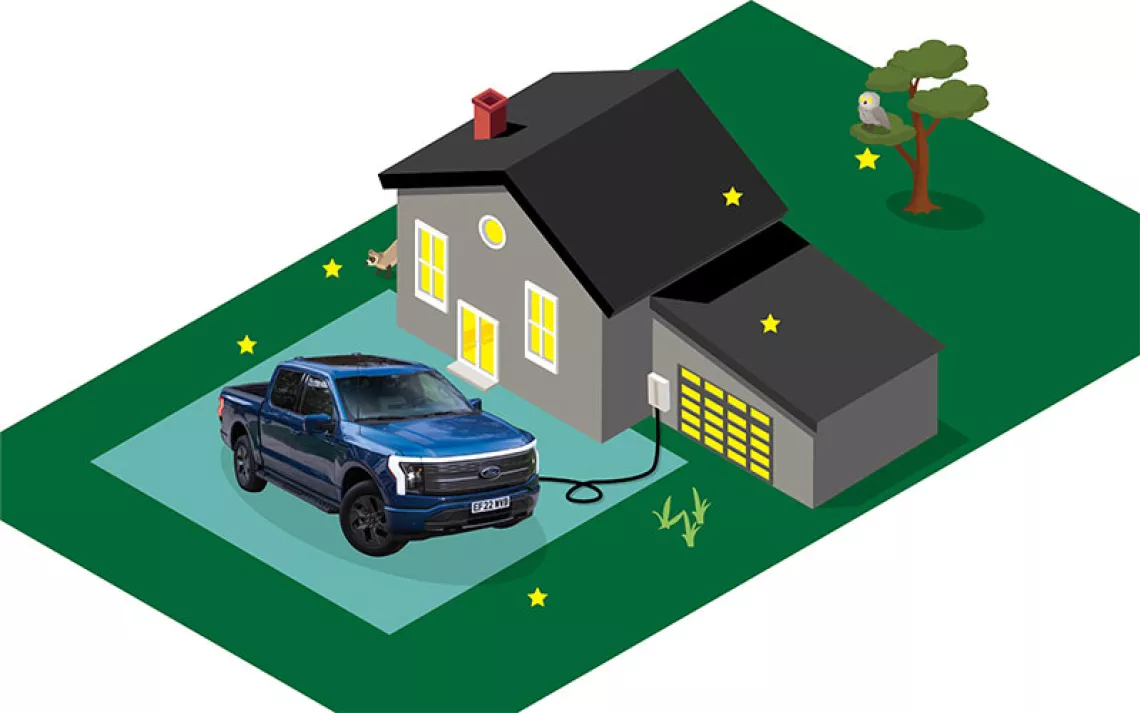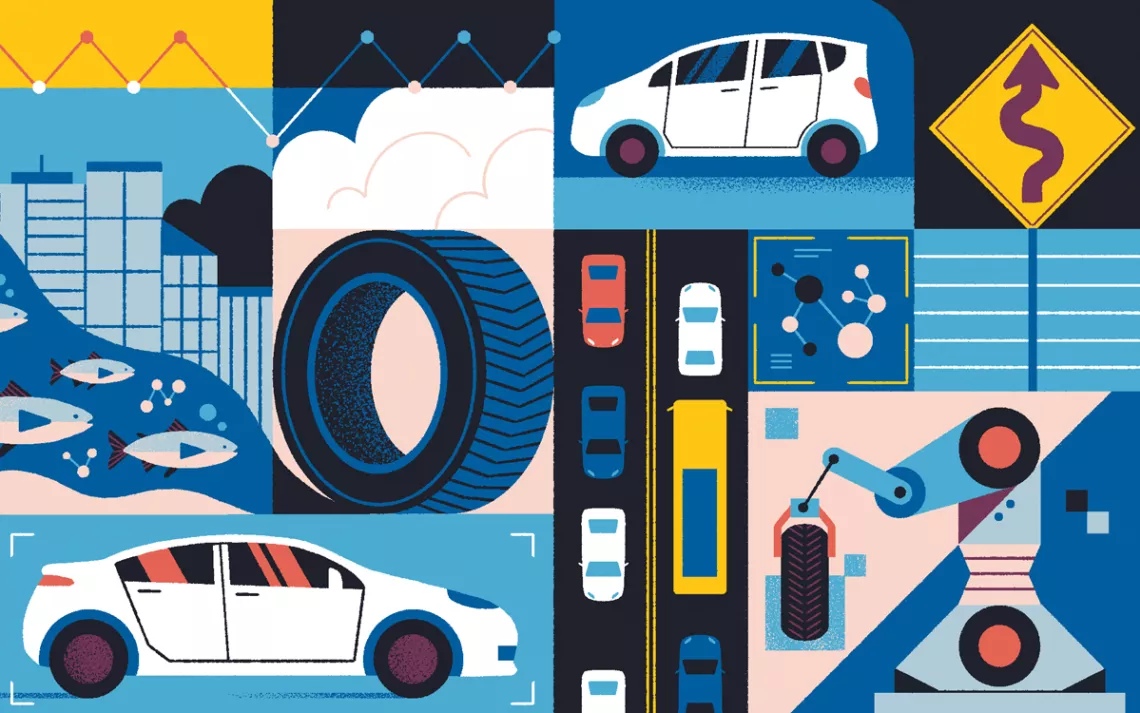Electrification: Coming Soon to a Harbor Near You
The infrastructure bill offers a unique opportunity to electrify the nation’s ferries

Photo by 6381380/iStock
Getting to Skagway, Alaska, can take a sailor’s keen eye and steady hand. The small harbor city lies between two snow-capped mountain ridges at the end of the Lynn Canal, a fjord about 90 miles long and more than 2,000 feet deep in some places. Among the boats that brave the passage are cruise ships, drawn in by the dramatic landscape, and passenger boats from the state’s network of ferries, known as the Alaska Marine Highway System.
“That's not just a fun colloquialism,” says Andrew Cremata, mayor of Skagway. “It’s truly a highway.” His constituents take the ferry south to Juneau and Haines for doctor’s visits, conferences, and sports events. It's a seven-hour drive to Haines but only an hour and a half by boat, and ferry is the only practical way to get to Juneau. But lately, the ferries haven’t been coming. “Having [the ferry service] kind of go into disrepair and not be funded fully over the last few years has been extremely difficult for people living in the region,” Cremata says.
The infrastructure bill sets aside more than a billion dollars for ferry services, much of which is expected to benefit Alaska. But after years of depending on the sometimes unreliable Marine Highway System, residents don’t just want more of the same. Cremata says they’ve set their sights on building an electric ferry powered by hydroelectric plants on nearby Kasidaya Creek and Goat Lake. The bill sets money aside for one or more electric ferry pilot projects, and Cremata is hoping Skagway will be among the recipients. The city is pursuing other opportunities for funding, he says. “But boy, that would really solve the problem without having to go jump through a bunch of hoops.”
The infrastructure bill provides a host of opportunities to cut carbon emissions from transportation, from electric school buses to new charging stations, ferries included. Ferries aren’t the biggest polluters on the water—that prize goes to giant ocean liners and cargo ships. But because ferries are generally smaller and take shorter trips, they’re easier to switch to electric.
Now is the time for environmental journalism.
Sign up for your Sierra magazine subscription.

Besides, waterside communities like Skagway need electric transport too, says Elise Georgeff, a research associate at the International Council on Clean Transportation (ICCT). “If they can make this one aspect of their lives greener, it would be a huge benefit to the community.”
In the United States and its territories, almost 900 ferries take passengers to the beach and to work, from mainland Puerto Rico to the outlying islands, and into the mist-veiled waters around Niagara Falls. The boats have names like Chesapeake Breeze, Lady Martha, McShiny, and Beaver Dick Leigh.
The vast majority run on carbon-spewing diesel and gasoline, and one—a vintage steamship on Lake Michigan called the SS Badger—still fires its engine with coal. But a few places have been experimenting with other methods. The Spirit of Kingston and the MV Doc Maynard in Seattle, use a 10 percent mixture of biodiesel, a fuel made out of oils and fats from plants and animals. The two ferries that take people to and from Alcatraz Island—the Alcatraz Clipper and the Alcatraz Flyer—are hybrids that supplement their diesel engines with wind turbines and solar panels mounted on the boats themselves. The Akers Ferry in Shannon County, Missouri, runs back and forth over the Current River on an electrified cable, like a ski lift or a trolley car.
Last year, the Maid of the Mist at Niagara Falls debuted two fully electric ferries, complete with a lime-green paint job. Free-floating electric ferries are still rare in the US, but some say change is on the way. “It depends on how this technology evolves, but it's evolving—make no mistake about it,” says Tim Aguirre, general manager for HMS Ferries in Alabama. In 2019, the company retrofitted a small ferry in Gee’s Bend, converting it from a 425-horsepower diesel engine to a fully electric battery-powered motor. The lithium-ion batteries are charged with electricity from a hydropower plant down the river. Aguirre, who also drives the boat, has been enjoying the new ride. “It's a lot quieter, and of course there's no diesel smoke coming out of it.”
Elise Georgeff, the research associate at ICCT, has studied electric ferries in places like Denmark, which debuted the Ellen in 2019. At the time, it was the world’s largest electric ferry, almost 200 feet long. The ship can carry about 30 cars and run for more than 20 nautical miles between charges. “That was the big boost of confidence electric ferries needed,” says Georgeff. The electric ship technology is ready to go, she says. What’s needed now is funding for charging stations and other dockside infrastructure.
Aside from the cost of converting the boat, Gee’s Bend had to install new dockside charging stations. The venture was funded with a $1.09 million grant from the Environmental Protection Agency through the Diesel Emissions Reduction Act. The ferry is owned by the state but operated by Hornblower Marine Services, a private company. "Usually you see that these are publicly owned entities that do these things, whether it's wind farms or hydrogen fuel cells,” Aguirre says. “But as the application becomes more accepted, the cost will come down, and it'll become more feasible for private enterprise to utilize this technology as well.”
The version of the infrastructure bill that recently passed the Senate and is on its way to the House includes a few provisions for ferries that could help with these up-front costs. One item is $570 million over five years for “construction of ferry boats and ferry terminal facilities,” and another sets aside $1 billion over five years for essential ferry services in rural areas.
The latter would help with the cost of running ferries in Alaska as well as places like Ocracoke, a small island off the coast of North Carolina. With help from the National Renewable Energy Laboratory, the island has been looking into electrifying its ferry service, which is rather essential. “There's no other way in, other than flying,” says Paul Spruill, CEO of Tideland Electric Membership Corporation. The ferry supports the island’s tourist economy, but it’s also a lifeline for year-round residents, especially in hurricane season. “You’re maybe evacuating five, six, seven thousand people in a matter of three days. And it all has to happen with the ferry vessels,” says Spruill.
And then there are the $250 million pilot project grants that caught Skagway’s eye. The money could be used to build an electric ferry, but the bill also leaves room for boats that run on other fuels like natural gas and liquefied petroleum gas, which release greenhouse gases. If the funds are to go toward building a fully electric ferry, it will be because a place like Skagway receives one of the grants.
Skagway’s electric ferry design—120 feet long, with room for about 100 passengers—was drawn up by Elliott Bay Design Group, a firm based in Seattle. The city can expect its ferry to last 40 to 60 years, according to Robert Ekse, the firm’s president, and construction would cost about $8.5 million, which does not include the cost of dockside charging stations.
There are also cheaper alternatives to building a new ship, like retrofitting an existing diesel ferry to make it electric, as the design firm Glosten did in Gee’s Bend. And in places where fully electric ferries aren’t feasible, hybrids might be a better fit, Ekse says.
The investment can be weighed against the potential environmental benefits. Like other diesel-powered vehicles, ferries emit soot and nitrogen oxides, which contribute to local air pollution. Cutting down on diesel would also help the US reach its carbon goals, like net-zero emissions by 2050. When Skagit County in Washington State looked into replacing its Guemes Island ferry, they found that switching to electric could cut roughly 67 percent of the ferry’s carbon emissions over 30 years, given decarbonization projections for the local power supply.
Electric ferries are a small but not insignificant part of a larger trend toward electrifying transportation in the US. It may take decades to fully phase out the current generation of gas-powered vehicles, so the sooner we can start, the better, says Danielle Arostegui, a senior analyst at the Environmental Defense Fund. “We need to be investing in all of these technologies, helping to drive down the cost and making it easier for people to be able to actually deploy and afford these things.”
In the meantime, Skagway will be keeping a close eye on the infrastructure negotiations. “We're just staying optimistic that this bill is going to pass Congress,” says Cremata. “And if it does, we're ready to move.”
 The Magazine of The Sierra Club
The Magazine of The Sierra Club



